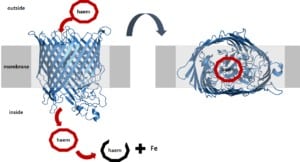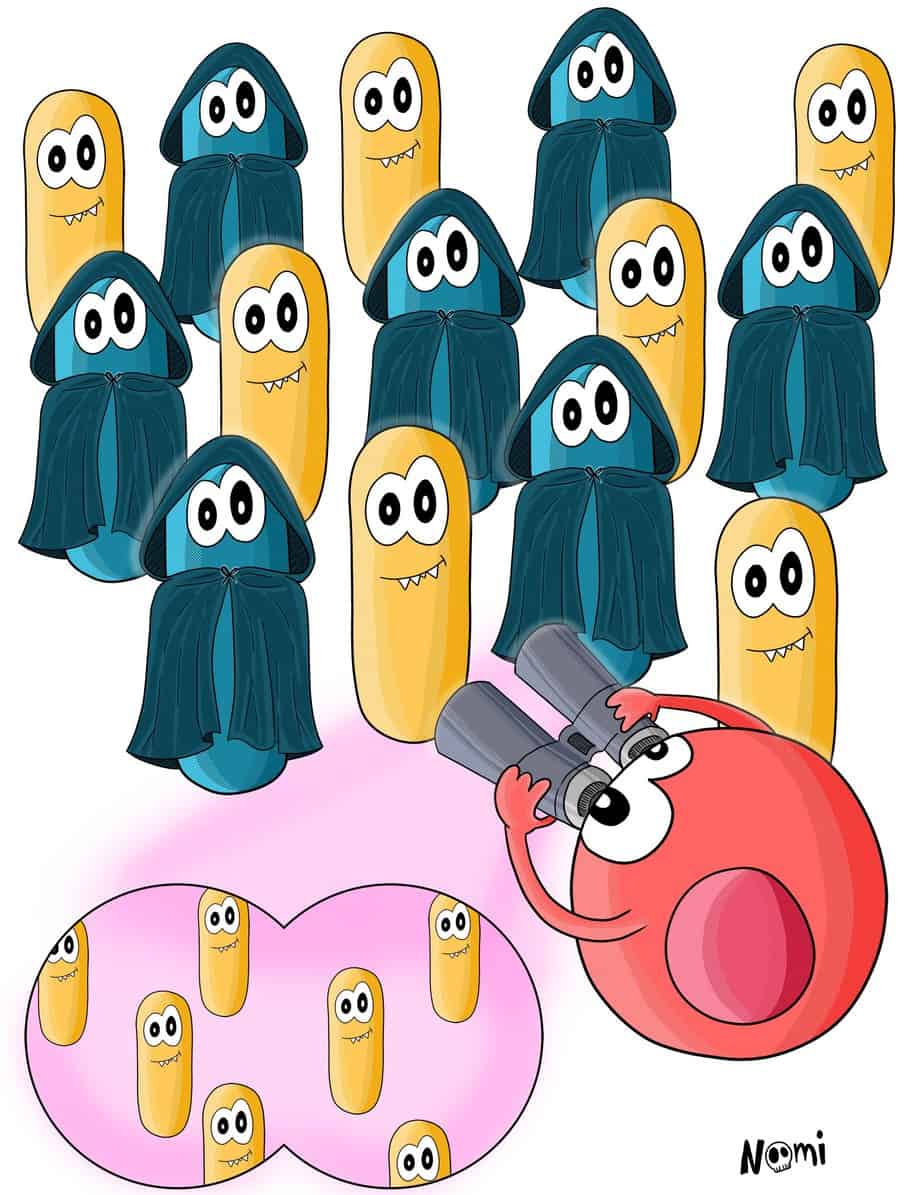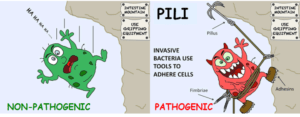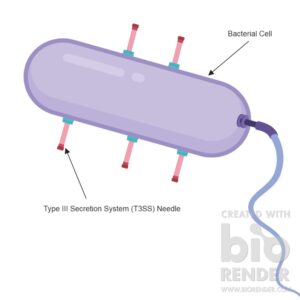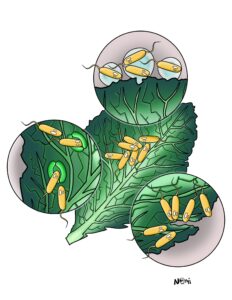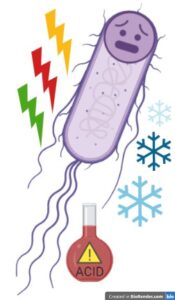The human body developed amazing mechanisms to fight off bacterial pathogens. And yet, many bacteria learned to swim through our bodies as if nothing was in their ways. As if there was no obstacle, no immune system to stop them.
Many of our organs have a slimy mucus which is supposed to stop bacteria from entering the human body. But some bacteria developed mechanisms to swim through this gel-like mucus faster than others.
And these bacteria are usually the ones that make us super sick.
Meet the bacterial race swimmer Campylobacter jejuni
The pathogenic bacterium Campylobacter jejuni for example causes food-poisoning and watery diarrhoea. And this pathogen can swim through gel-like slimes, like the mucus in our bodies. Other bacteria are slowed down by this slime, but not Campylobacter jejuni. It even swims faster when it hits slime!
Why is that?
Well, that is exactly what researchers were trying to find out.
Two flagella for one movement
Campylobacter jejuni looks pretty cool. It has a helical shape and one flagellum on each side of the cell. Flagella are like fine hair that grow out of the bacterium.
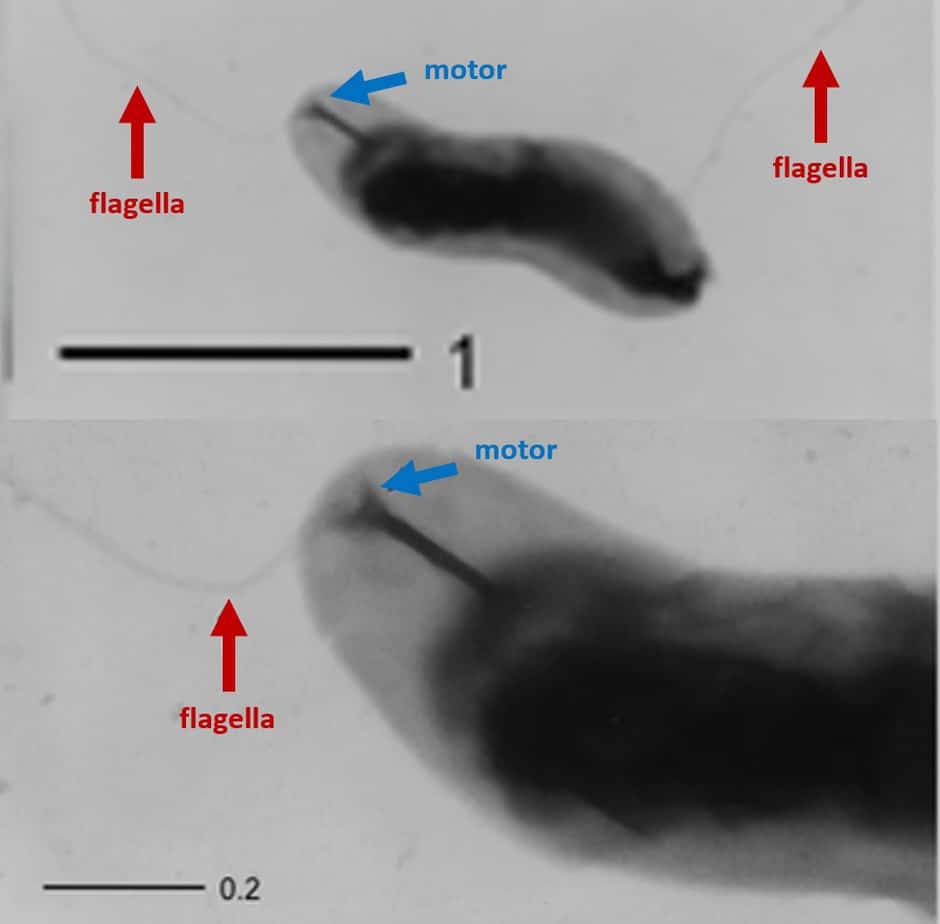
Closer to the membrane of the bacterium, the flagellum becomes a so-called hook. This hook is connected to a little motor inside the bacterium. And this motor rotates, which then rotates the hook and thus the flagellum. Now, the flagellum works as helical propeller and this movement pushes the bacterium forward so that it swims.
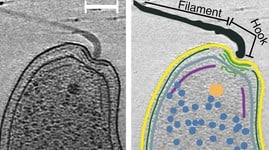
Since Campylobacteria jejuni has two flagella of different length, researchers were curious about how this bacterium would move. Two motors would constantly push the bacterium in the opposite direction. Plus, they saw previously that this bacterium can swim faster than other bacteria in slime. But they had no idea how these two flagella would work together.
Wrapped in flagella
To see the flagella under the microscope, they changed them slightly. Like this, they could stain the flagella and see them as yellow fluorescent tails under the microscope.
They saw that in watery liquids, half of the bacteria had both their flagella spread to both sides and they were swimming slowly. This you can see on the left side in this video. The other half had one flagellum rotating as a tail at the back and the other flagellum was wrapped around the bacterial cell.
In gels (in the video on the right) almost all the bacteria (>95%) had one of their flagella wrapped around their cells. Plus, these cells swam faster and more directed. Mind-blowing!
Two motors are better than one
So, the researchers wanted to know why Campylobacter jejuni wraps the flagellum at the front around its cell and how that helps the bacterium to swim faster. They created two mutants of this bacterium: One bacterium did not have a front-flagellum and the other did not have a tail-flagellum.
And they looked at how these mutants swam in comparison to the bacterium that has two flagella. In the video below, you can see the bacterium with two flagella on the left, the bacterium with the tail-flagellum in the middle and the bacterium with the front-flagellum on the right.
And as you can see, the bacteria in the middle had their tail-flagellum propelling. This pushes the bacterium forward so that it swims. Bacteria with the front-flagellum still swam. And the researchers confirmed that this front-flagellum is still rotating. It works as if it drills the bacterium forward.
So, when bacteria have two flagella, it has double the power; and the pushing and drilling together makes this bacterium super fast.
Changing direction
Next, the group was interested to see how Campylobacter jejuni changes its swimming direction. Luckily, they managed to film one bacteria at the moment when it decided to swim towards the other side.
In this video, you can see that first the front-flagellum changes the direction of its rotation. Like this, it is getting unwrapped from the bacterium.
Then, the tail-flagellum also changes its direction of rotation and the bacterium halts its movement. This looks as if the bacterium tumbles trying to get to the new direction.
Next, the former tail-flagellum wraps around the bacterium and becomes the front-flagellum.
And the former front-flagellum becomes the tail-flagellum and rotates to push the bacterium towards the opposite direction.
Two flagella to get to the perfect location
Researchers already knew that other bacteria also wrap their flagella around their cells. But often this happens in trapped places so that the bacterium tries to protect its flagellum. However, Campylobacter jejuni with its two flagella developed some efficient mechanisms to infect the human body.
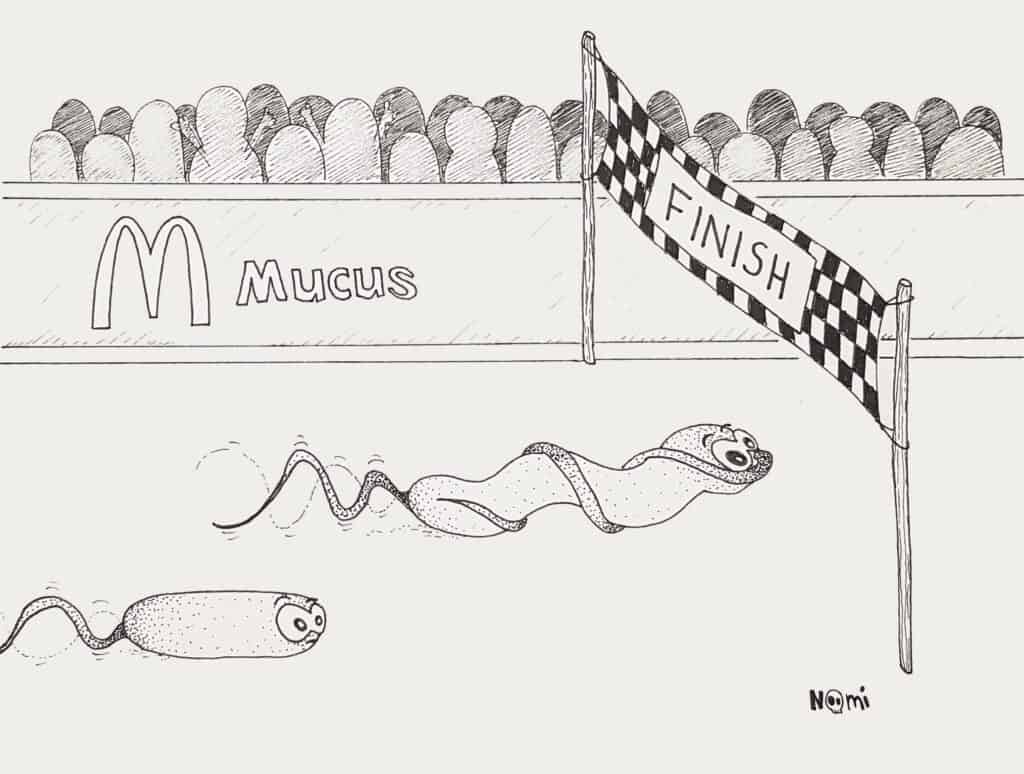
- Its helical shape helps the bacterium to drill through slimy mucus
- A rotating front-flagellum pulls the bacterium actively forward helping with the drilling movement of the bacterium
- The tail-flagellum rotates to propel the bacterium forward
- By quickly changing its swimming direction, Campylobacter jejuni can escape from confined spaces or maybe even immune cells in the human body
I’m always amazed by what bacteria come up with to escape dangerous situations…
So, now that we better understand how this pathogen moves in our bodies, we better understand how it infects us. This knowledge will now help to fight this pathogen. Let’s hope that it will help us get rid of such nasty food-poisoning-causing bacteria.

